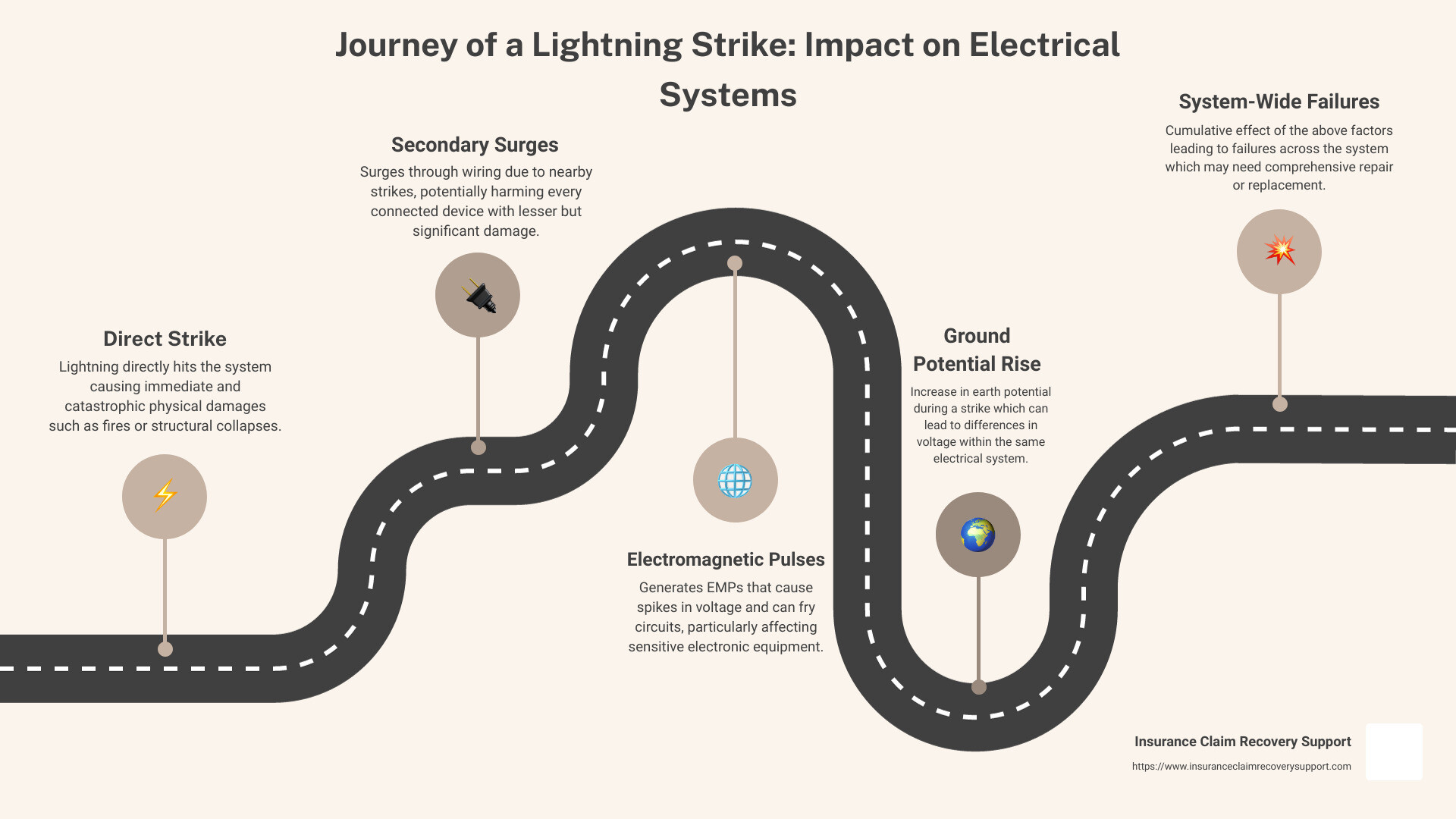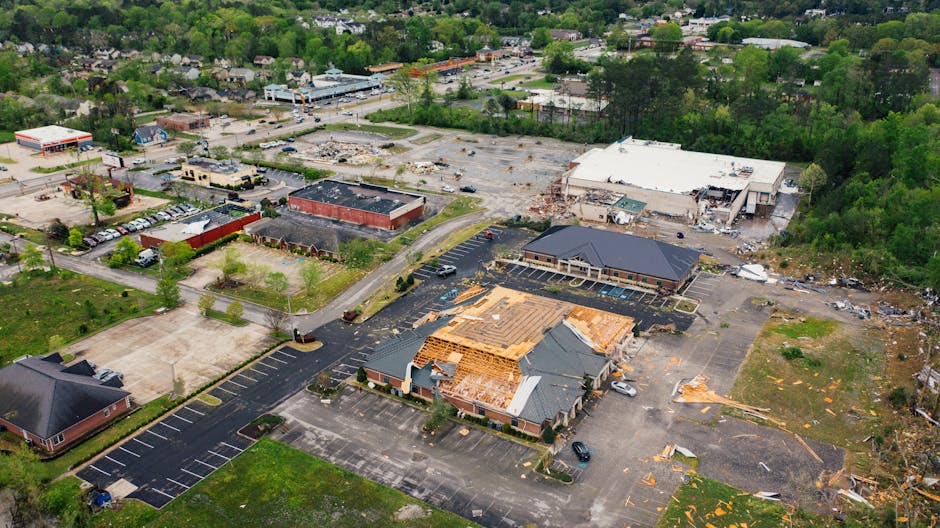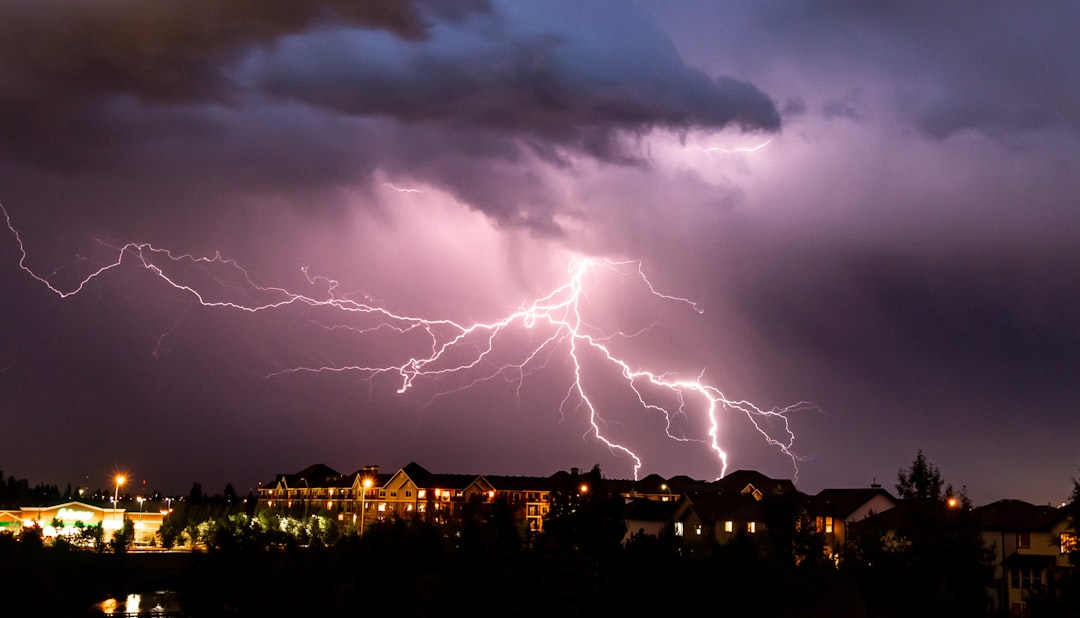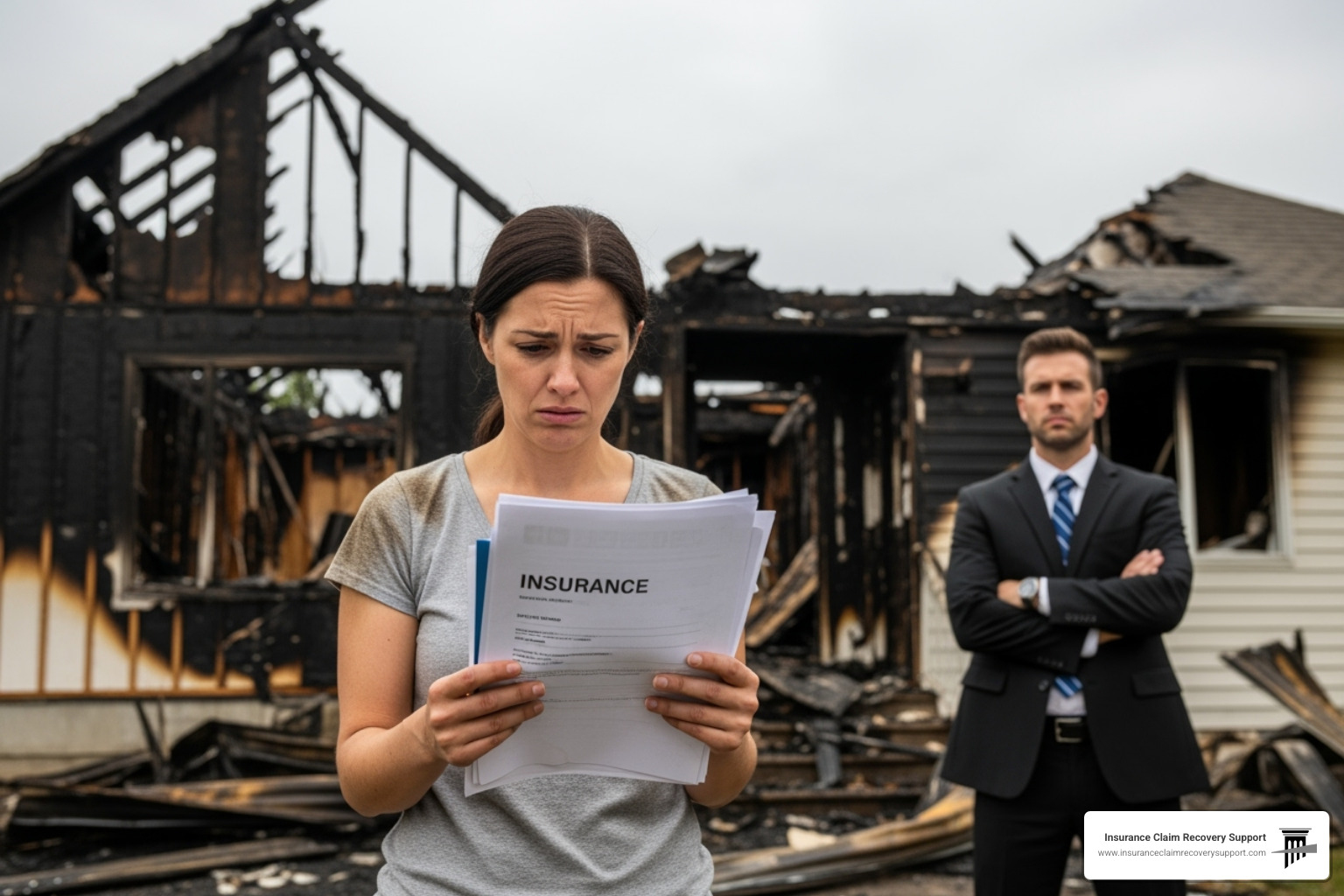How does lightning damage electrical systems and components? Lightning, a powerful natural phenomenon, can cause significant harm to electrical systems in several critical ways. First, through direct strikes that damage any system they contact. Second, through indirect effects like power surges and electromagnetic pulses which can fry circuits and degrade performance.
Introduction
Lightning is one of nature’s most powerful forces, capable of unleashing massive amounts of electrostatic discharge in a very short period. The impact of these discharges on modern electrical systems, particularly in commercial properties, can be devastating. At the core, lightning damages electrical systems by overwhelming them with sudden, excessive electrical energy. This energy can override system protections and destroy electronic components almost instantaneously.
For property owners in sectors ranging from healthcare facilities to industrial parks, understanding how lightning can damage electrical systems is crucial. This knowledge helps in both preparing for storm seasons and managing the aftermath effectively. Electrical systems encompass not only the power lines and hardware but also the embedded systems within machinery and appliances that are sensitive to electrical fluctuations. A lightning strike, whether direct or nearby, can send a surge of power that burns out circuits and deteriorates the lifespan of these components.
Direct strikes are visually dramatic and easy to recognize, but it’s the subtle, indirect effects that often go unnoticed until the damage is done. These effects include secondary surges that travel through wiring and grounding systems, potentially impacting every connected device.

As we dive deeper into the guide, we’ll explore the various types of damages including physical, secondary, EMP, and ground reference potential changes in detail and discuss strategies to protect your valued assets from these violent natural forces.
Types of Lightning Damage
Lightning is a powerful natural phenomenon that can cause significant damage to electrical systems and components. Understanding the types of damage it can cause is crucial for prevention and repair. Here, we break down the four main types of lightning damage: Physical Damage, Secondary Effect Damage, Electromagnetic Pulse (EMP) Damage, and Ground Reference Potential Charge Damage.
Physical Damage
Lightning’s intense heat and electrical charge can cause immediate and visible damage to structures and systems:
– Heat: The temperature of a lightning strike can reach up to 50,000 degrees Fahrenheit, which is hot enough to melt metals and ignite fires.
– Fire risk: Due to its high temperature, lightning can easily set buildings, forests, and other flammable materials on fire.
– Structural damage: The sheer force of a lightning strike can fracture concrete, shatter glass, and damage the structural integrity of buildings.
Secondary Effect Damage
The effects of a lightning strike can be far-reaching, affecting areas beyond the initial strike point:
– Arcing: When lightning hits a structure, the high voltage can cause electrical arcs to other conductive objects, spreading the damage.
– Induced currents: Lightning can induce currents in nearby metal objects or electrical circuits, potentially overloading and damaging them.
– Hazardous to flammable materials: Secondary effects can ignite flammable materials not directly hit by the initial strike, due to sparks or heated materials.
Electromagnetic Pulse (EMP) Damage
The EMP from a lightning strike can cause widespread damage to electronic systems:
– Power surge: The EMP can result in a sudden surge of voltage that overwhelms electrical and electronic systems.
– Voltage spikes: These instantaneous spikes can destroy or severely damage sensitive electronic components.
– Damage to advanced electronics: Modern electronics with microprocessors are particularly susceptible to EMP damage, as their intricate circuits can be easily fried by voltage spikes.
Ground Reference Potential Charge Damage
Differences in ground potential during a lightning strike can lead to significant electrical system issues:
– Potential difference: A lightning strike can create a voltage differential across the electrical system of a building, leading to disruptive and damaging currents.
– Electrical system damage: This can include damage to the electrical wiring, circuit breakers, and other components of the electrical distribution system.
– Need for grounding: Proper grounding and bonding are essential to mitigate the effects of ground potential differences, ensuring that excess electricity from a lightning strike is safely directed into the earth.
Each type of damage poses unique challenges and requires specific strategies for protection and mitigation. By understanding how does lightning damage electrical systems and components, facilities can implement more effective lightning protection measures to safeguard their operations and assets. Next, we will explore how lightning specifically impacts electrical systems, from transient currents to disruptions in sensitive equipment.
How Lightning Affects Electrical Systems
Lightning is a powerful natural phenomenon that can cause significant damage to electrical systems. This section will explore how lightning impacts consumer electronics, large appliances, and electrical wiring.
Impact on Consumer Electronics
Consumer electronics are particularly vulnerable to lightning due to the integrated circuits they contain. These circuits consist of hundreds to billions of tiny components that can be easily damaged by electrical surges.
Transient currents and high-frequency harmonics generated by lightning can induce voltage spikes in the electrical system. These spikes put excessive stress on the integrated circuits, potentially leading to device malfunctions, such as sudden shutdowns, flashing displays, or even a burning smell.
Signs of surge damage in consumer electronics can include devices failing to power on or exhibiting erratic behavior. This is often a result of the microscopic pathways within the chips being melted or disrupted by the surge.
Impact on Large Appliances
Large appliances like refrigerators, dishwashers, and dryers also suffer from lightning-induced electrical surges. These appliances are increasingly relying on electronic control boards, which are susceptible to damage from voltage spikes.
The control board damage can manifest as the appliance failing to start or operate correctly. Additionally, appliances with motors are at risk of motor vulnerability. During a power surge, if the motor lacks sufficient starting power, it might not restart, causing the internal wiring to overheat and possibly trigger the thermal protector.
Impact on Electrical Wiring
Electrical wiring in homes and buildings is the primary pathway through which lightning-induced surges travel. Overheating risks and fire hazards are significant concerns when it comes to electrical wiring. A surge can heat the wires to a point where their insulation melts, leading to short circuits and potential fires.
Standards compliance is crucial in ensuring that electrical wiring is capable of withstanding unexpected surges. Older wiring or systems not up to current standards are particularly at risk, as they may not effectively handle the high currents induced by lightning.
By understanding how does lightning damage electrical systems and components, individuals and businesses can take appropriate measures to protect their valuable electronics and appliances from lightning strikes. The next section will discuss specific lightning protection measures to further safeguard these systems.
Lightning Protection Measures
Importance of Adequate Protection
Lightning is a powerful natural phenomenon that can cause severe damage to electrical systems and components. To safeguard facilities and ensure the safety of employees, implementing robust lightning protection measures is essential. Let’s explore the key strategies: bonding and grounding, surge protection, and structural lightning protection.
Bonding and Grounding
Bonding and grounding are foundational to any lightning protection strategy. This method involves creating a direct pathway for the lightning charge to reach the earth, dissipating the energy safely into the ground. It helps in stabilizing the electrical potential within a facility, thus protecting all connected systems. An effective bonding and grounding system ensures that in the event of a lightning strike, the extreme currents have a low-resistance path to the earth, significantly reducing the risk of damage to the electrical infrastructure.
Surge Protection
Surge protectors are devices designed to protect electrical appliances from voltage spikes. When lightning strikes, it can induce transient surges in power lines that may overwhelm and damage connected devices. By installing surge protectors at critical points, such as the main electrical panel and at outlets, these unwanted voltages are diverted away from sensitive components, protecting them from harm. This is particularly crucial for preserving the lifespan of expensive or critical equipment that could be costly to repair or replace.
Structural Lightning Protection
Structural lightning protection involves the installation of external features designed to attract and safely redirect the lightning strike away from the building. Techniques such as the installation of lightning rods or conductive cables on the roof form a protective barrier. These systems work by intercepting the lightning strike and providing a direct path to the ground, preventing the building and internal systems from becoming the shortest path to the earth.
Minimizing Risks
By implementing these protection measures, businesses can drastically reduce the risk of damage caused by lightning strikes. Not only do these systems protect the structural integrity of the building, but they also safeguard the electronic and electrical systems within, thus ensuring continuous operation and safety during thunderstorms.
Maximizing Safety
Safety is the paramount concern during thunderstorms. With adequate lightning protection measures in place, the risk to human life is significantly minimized. These systems provide peace of mind, knowing that both the people and the assets within the facility are protected against unpredictable weather events.
Protecting Facilities and Employees
For businesses, the installation of comprehensive lightning protection systems is an investment in safety and operational continuity. It helps avoid potential downtime due to equipment failure and ensures that employees are not exposed to the hazards associated with electrical systems during a lightning event.
In conclusion, the importance of adequate lightning protection cannot be overstated. It encompasses not only the installation of specific protective devices but also a holistic approach to safety and risk management in the face of natural electrical disturbances. By prioritizing these measures, businesses can ensure the protection of their facilities and the safety of their employees, ultimately contributing to a more resilient operational framework.
In the next section, we will address some of the most frequently asked questions about lightning damage to help clarify common concerns and provide additional insights into protecting your assets.
Frequently Asked Questions about Lightning Damage
Can lightning damage unplugged electronics?
Yes, lightning can still damage unplugged electronics. When lightning strikes a nearby object, it can generate a powerful electromagnetic pulse (EMP) that radiates through the air. This EMP can induce voltage spikes in any electrical circuit within range, including those in unplugged electronics, potentially damaging their internal components. It’s important to not only unplug devices but also consider additional protective measures like surge protectors and proper grounding.
How close does lightning have to be to damage electronics?
Lightning does not need to strike a building directly to cause damage to electronics. A strike nearby can be enough to induce currents and voltage spikes in electrical systems. Typically, lightning can affect electronic devices and systems within a few hundred meters. The electromagnetic pulse from a nearby strike can travel through power, telephone, and cable lines, leading to surges that damage connected devices.
How to prove to insurance damage is from lightning?
Proving that damage to electronics or electrical systems is due to lightning can be challenging but is essential for insurance claims. Here are some steps to help substantiate your claim:
-
Documentation: Immediately after the incident, document all damages with photos and detailed descriptions. This includes any visible signs of burns or surges on electronics and structural damage to the property.
-
Expert Assessment: Have a professional inspect the damage. They can determine if the characteristics of the damage align with those typically caused by lightning or surge events.
-
Weather Reports: Obtain weather reports for the date and time of the incident to confirm there was lightning activity in your area. This can often be supported by a lightning verification report from meteorological services.
-
Witness Statements: If possible, gather statements from witnesses who observed the lightning strike or the immediate effects on your property.
By combining these elements, you can build a strong case for your insurance claim, demonstrating that the damage was likely caused by lightning. Detailed and prompt action is crucial in these situations to ensure that all relevant evidence is accurately captured and reported.
Conclusion
At Insurance Claim Recovery Support, we understand the complexities and challenges that come with navigating property insurance claims, especially those involving lightning damage. Our commitment is to stand by your side, ensuring that you are not only heard but also fairly compensated.
Advocating for Policyholders
We believe that every policyholder deserves robust support and expert guidance. Lightning strikes can be as unpredictable as the damage they cause, ranging from direct physical damages to more insidious EMP effects that might not be immediately evident. This is where our expertise comes into play. We advocate tirelessly on your behalf, leveraging our deep understanding of insurance policies and claim processes to argue for a settlement that truly reflects the extent of the damage and the impact on your property.
Maximizing Settlements
Our goal is to ensure that you receive the maximum possible settlement. We meticulously assess the damage, often going beyond the surface to understand the full impact of the lightning strike. Whether it’s the immediate destruction or the latent effects that manifest over time, we ensure that every aspect is accounted for in the claim. By doing so, we strive to secure a settlement that covers the cost of all necessary repairs and replacements, ensuring that your financial interests are protected.
Expertise in Lightning Damage Claims
With our experience in handling lightning damage claims, we bring a wealth of knowledge and a network of expert resources. We understand the nuances of such damages and the best practices for documenting and proving them to insurance companies. Our expertise not only smooths the path to a fair claim resolution but also helps in preventing potential disputes that could arise from misinterpretation of the damages or the coverage.
Navigating the aftermath of a lightning strike can indeed be daunting, but with Insurance Claim Recovery Support by your side, you can face this challenge with confidence. Let us advocate for you and ensure that your property is restored and your financial interests are protected. For more details on how we can assist you, please visit our service page.
When lightning strikes, you’re not alone. We’re here to light the way to recovery.






